Home » Tree surgery » Ash Dieback Management
Ash Dieback Management
We Are Professional Tree Surgeons That Can Help You With Ash Dieback, including removal and management.
Causes of Ash Dieback:
Ash dieback is primarily caused by a fungus called Hymenoscyphus fraxineus, which attacks ash trees by affecting their leaves, stems, and branches, ultimately resulting in their death. The disease spreads through the air and can also be transmitted through infected plant material. Besides the fungus, environmental factors such as temperature, humidity, and soil moisture also play a crucial role in the severity of the disease. The fungus thrives in cool and moist conditions, which makes it challenging to manage in regions with high rainfall.

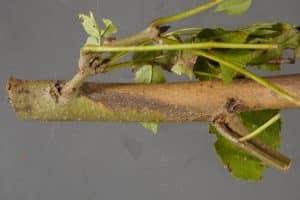
Images courtesy of Food and Environment Research Agency – FERA, OGL v1.0,
Simply drop us a message below and we will be in touch
Symptoms of Ash Dieback:
When it comes to ash dieback, the symptoms can vary depending on how far the disease has progressed. In the early stages, affected trees may display some of the following signs:
Leaves changing color: Leaves might develop brown or purple-black patches that can spread throughout the entire leaf. These patches may look uneven or blotchy.
Leaves falling off: Trees might start to shed their leaves too soon, especially in the upper parts of the tree.
Cankers: Stems or branches may develop lesions or cankers, which could appear discolored or cracked.
As the Ash Tree disease progresses, infected trees may develop:
Crown Thinning
The canopy of the tree may become thinner as branches dieback. This can lead to a "stag-headed" appearance, with the top of the tree devoid of foliage.
Branch dieback:
The tips of branches and twigs may start dying, and can be easily broken off. This can also lead to the formation of epicormic growth (shoots growing from the base or trunk of the tree).
Bark splitting and cracking:
As the tree weakens, the bark may start to crack and split, particularly on the lower trunk.
Management Strategies:
Unfortunately, there is no known cure for ash dieback, but there are strategies that can be used to manage the disease and limit its spread. These strategies include monitoring, removal and disposal of infected trees, fungicide treatments, and planting diversification.
Regular monitoring of ash trees is important in identifying infected trees early, enabling their prompt removal and proper disposal to avoid further spread of the disease. Visual surveys, aerial surveys, or remote sensing techniques can be used to conduct the monitoring. The practice can also identify trees that are resistant to the disease, which can be used for breeding programs.
In cases where ash trees are infected, they must be removed and disposed of correctly to prevent further spread of the disease. Depending on the situation, infected material may be burned, buried, or chipped. Biosecurity protocols must be followed strictly to prevent the spread of the disease. Sometimes, it may be necessary to remove healthy trees in close proximity to infected ones.
Although fungicides may help reduce the severity of ash dieback in individual trees, there is no long-term solution, and fungicides are not recommended for large-scale use. Fungicide use should be limited to trees with high ecological or cultural value, or for the purpose of maintaining public safety. Qualified professionals should apply fungicides, and their application should be timed with the optimal growth stage of the fungus.
Planting a diverse range of tree species can help reduce the impact of ash dieback by reducing reliance on ash trees. This strategy can also promote ecological diversity and resilience in affected areas. It is important to choose appropriate species for the site conditions and ensure that they are not susceptible to other pests and diseases.
Click on the photos hotspots below to find out about the signs of a diseased Ash Tree, so you know what to look out for on your trees.
Wilted and damaged leaves are a telltale of a diseased Ash Tree.
Large Lesions on the tree are an obvious sign of disease.
Fungal growth shows disease to the ash tree.
Smaller lesions are also a sign, smaller ones often seen on the branches and stems.
